Critical review of chronic toxicity testing approaches with the saltwater mysid (Americamysis bahia) used in pesticide registration
- PMID: 39902585
- PMCID: PMC11947377
- DOI: 10.1093/etojnl/vgaf036
Critical review of chronic toxicity testing approaches with the saltwater mysid (Americamysis bahia) used in pesticide registration
Abstract
The United States Environmental Protection Agency (USEPA) has a conditional requirement for a chronic toxicity test with mysids (Americamysis bahia) for registration of pesticide products. Achieving performance acceptability criteria in control treatments for this study can be challenging because the current draft test guideline, which was published in 1996 under USEPA Office of Prevention, Pesticides, and Toxic Substances (OPPTS) 850.1350, Mysid Chronic Toxicity Test, provides limited information on study design and conduct. This critical review was undertaken to (1) identify areas of inconsistency in acceptability criteria between the 1996 draft OPPTS test guideline and ASTM International test guidance, (2) highlight areas that require additional clarification, (3) discuss areas that are impractical or have uncertain scientific relevance regarding the objectives of the test, and (4) provide recommendations for revision of the draft OPPTS test guideline. To achieve this, 116 final study reports from chronic mysid toxicity tests conducted over approximately the past 30 years were collected. From these reports, survival, growth, and reproduction data from negative and solvent control groups were compiled. Through investigation of trends in the data, it became apparent that no-observed-effect concentrations (NOECs) were most commonly based on reproductive endpoints, followed by adult growth endpoints and adult survival. Notably, less than 1% of studies had a NOEC based solely on a second-generation measurement endpoint. Analysis of this comprehensive data set provided clarity on the establishment of acceptability criteria for the study and elements of the testing procedure that can be streamlined without loss of critical information, which resulted in a set of recommendations to improve future versions of the chronic mysid toxicity test guideline.
Keywords: aquatic invertebrates; aquatic toxicology; marine toxicity tests; pesticide regulation.
© The Author(s) 2025. Published by Oxford University Press on behalf of the Society of Environmental Toxicology and Chemistry.
Conflict of interest statement
During the period this work was conducted, Margaret Fleming and Jane Staveley were employed by Exponent, a consulting firm that offers services to chemical companies, among others. Alan Samel was previously employed by FMC Corporation. John Aufderheide, Sean Gallagher, Cliff Habig, Joseph Marini, Amanda Milligan, Lee Sayers, and Suzanne Schneider are employed by contract laboratories or consulting firms, as disclosed by their affiliation, that offer services to chemical companies, among others. T. Michelle Blickley, Audrey Bone, Eric Bruns, Tara Catron, Daniel Edwards, Maike Habekost, Kevin Henry, Alan Jones, Gwendolin Kraetzig, Shari Long, Patricia Lopez-Mancisidor, Adric Olson, Bridget F. O’Neill, Eric Peterson, Seamus Taylor, and Theodore Valenti are employed by chemical companies as disclosed by their affiliation. These companies produce pesticides, among other products. Katie Stump is employed by CropLife America, who supported the present study financially via the efforts of Exponent.
Figures



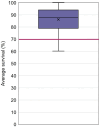
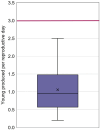
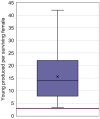
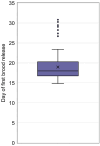
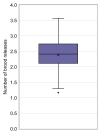



Similar articles
-
Silver speciation during chronic toxicity tests with the mysid, Americamysis bahia.Comp Biochem Physiol C Toxicol Pharmacol. 2002 Sep;133(1-2):75-86. doi: 10.1016/s1532-0456(02)00082-0. Comp Biochem Physiol C Toxicol Pharmacol. 2002. PMID: 12356518
-
Life-cycle studies with 2 marine species and bisphenol A: The mysid shrimp (Americamysis bahia) and sheepshead minnow (Cyprinodon variegatus).Environ Toxicol Chem. 2018 Feb;37(2):398-410. doi: 10.1002/etc.3957. Epub 2017 Nov 20. Environ Toxicol Chem. 2018. PMID: 28834561
-
Coupling toxicokinetic-toxicodynamic and population models for assessing aquatic ecological risks to time-varying pesticide exposures.Environ Toxicol Chem. 2018 Oct;37(10):2633-2644. doi: 10.1002/etc.4224. Epub 2018 Aug 6. Environ Toxicol Chem. 2018. PMID: 29978497 Free PMC article.
-
Challenging the requirement for chronic fish toxicity studies on formulated plant protection products.Toxicol Lett. 2010 Nov 30;199(2):111-4. doi: 10.1016/j.toxlet.2010.08.019. Epub 2010 Sep 8. Toxicol Lett. 2010. PMID: 20832457 Review.
-
FIFRA Subdivision F testing Guidelines: are these tests adequate to detect potential hormonal activity for crop protection chemicals? Federal Insecticide, Fungicide, and Rodenticide Act.J Toxicol Environ Health. 1997 Apr 11;50(5):415-31. doi: 10.1080/00984109708983999. J Toxicol Environ Health. 1997. PMID: 9140462 Review.
Cited by
-
Subchronic and Chronic Toxicity Assessment of Sublancin in Sprague-Dawley Rats.Toxics. 2025 May 21;13(5):413. doi: 10.3390/toxics13050413. Toxics. 2025. PMID: 40423492 Free PMC article.
References
-
- Anderson B., Phillips B. (2016). Saltwater toxicity tests. In Blasco J., Chapman P.M., Campana O., Hampel M. (Eds.), Marine ecotoxicology (pp. 167–197). Academic Press. 10.1016/B978-0-12-803371-5.01001-8 - DOI
-
- ASTM International. (2003). ASTM International E1191-03a: Standard guide for conducting life‐cycle toxicity tests with saltwater mysids. Approved October 1, 2003. https://www.astm.org/e1191-03ar23e01.html. Last re-approved January 25, 2023.
-
- Lussier S. M., Champlin D., Kuhn A., Heltshe J. F. (1996). Mysid (Mysidopsis bahia) life-cycle test: Design comparisons and assessment. ASTM International Special Technical Publication, 1306, 257–269.
-
- Office of Chemical Safety and Pollution Prevention. (2016). Ecological Effects Test Guidelines: OCSPP 850.1300 Daphnid Chronic Toxicity Test (EPA 712-C-16-005). U.S. Environmental Protection Agency.
-
- Office of Prevention, Pesticides and Toxic Substances. (1996). Ecological Effects Test Guidelines: OPPTS 850.1350 Mysid Chronic Toxicity Test Public Draft (EPA 712-C-96-120). U.S. Environmental Protection Agency.
Publication types
MeSH terms
Substances
Grants and funding
LinkOut - more resources
Full Text Sources
Medical
Miscellaneous

